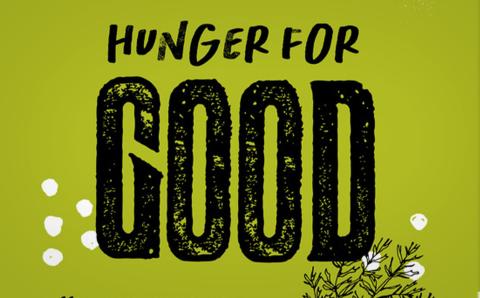Editor’s Note: This is the third in a three-part series about what enduring values have helped hold us together in the Christian Reformed Church and what might continue to hold us together going forward. You can read the first and second articles online at TheBanner.org or in print in the September and October issues.
Tight bonds between ethnicity and religion had fostered belonging in the Christian Reformed Church in its first century, as had isolation. But this isolation declined after World War II as CRC folk participated ever more in non-CRC American and Canadian religious and cultural networks. People from diverse ethnic, racial, and religious backgrounds also joined the denomination in modest numbers. CRC folk went out into the wider world—and the world came in.
These changes could be disorienting, but they also offered opportunities. CRC folk, like other North Americans, joined and loved more varied communities, institutions, and networks, often moving fluidly among them. Belonging to any one of them mattered less; belonging became layered, liquid, and leaky rather than solid and singular. We had choices.
But especially since the 1980s, the “culture wars” have divided Americans in new ways (Canadians, too, to a lesser degree). Belonging has also become something we fight about as both citizens and church members.
Can we find new ways of belonging in this context that might offer a compelling mission rooted in our shared Reformed tradition?
Growing Diversity
Since the 1970s, the CRC has become steadily more diverse. I remember a First Nations classmate in my CRC-affiliated Christian school. A Dutch immigrant family had adopted him. In the 1970s and 1980s, the CRC sponsored refugees from Vietnam, Laos, and Cambodia. Some of those families joined CRC congregations. I remember playing with a Vietnamese boy at school. The son of a German Lutheran pastor was in my classes in middle school, and occasionally CRC folk married Canadians who were not Christian Reformed.
These examples of “diversity” stood out for me as exceptions in the church communities of my childhood that otherwise were Dutch and Reformed. Growing up in small towns also shaped my childhood experiences. Diversity was already more common for CRC communities in cities like Halifax, Toronto, and Edmonton.
Dutch Reformed youth like me who came to Calvin College (now University) from Canada had a distinct experience of identity too. My non-CRC friends often described Calvin as a “weird Dutch place.” I remember laughing and saying that it didn’t seem Dutch to me. It was weird, all right, but it was to me a weird American place. I realized that I was not just Dutch and Reformed, but also very Canadian.
Diversity is not new to the CRC. Navajo Christians have been part of the denomination since the 1890s, with their numbers growing over the decades. The CRC had Jewish missions in the first half of the twentieth century, a Chinese mission and congregation in New York in the 1950s, and missions and congregations in Black communities in several cities. Calvin College and Seminary attracted students from the Middle East, China, and Korea in the decades before 1950. But diversity in the CRC grew significantly only in recent decades.
In 1996, only five percent of CRC folk were from ethnic minority groups. That grew to eight percent in 2011 and more than 20 percent in 2023. Roughly 25 percent of the 1,000 congregations in the CRC today are in Canada. More than 180 congregations or missions use a language other than English. They include 111 using Korean, 52 Spanish, 10 Navajo, two Swahili, three Hmong, and eight Chinese. There are predominantly Korean, Black, African, Latino, Navajo, Chinese, and Vietnamese CRC congregations. Of the 19 new ministries recorded in the CRC’s 2023 Yearbook, six are Spanish speaking and five Korean speaking. Net growth in the CRC since 2010 has been in non-white churches, notably in California, on the East Coast, and in Florida. Various CRC leadership networks support these ministries—Southeast Asian and Pacific Islander, Black and Reformed, Consejo Latino, East Meets West (Chinese), Native American/First Nations, and Korean. About 30 percent of students at Calvin University and almost half at the Seminary are North American or international students of color.
Finally, the CRC also has become more diverse religiously. We have members whose roots are Mennonite, Catholic, Baptist, nondenominational evangelical, Pentecostal, and more, and pastors whose training was at various Presbyterian, Reformed, and evangelical seminaries. And cradle CRC folk have been influenced by other Christian traditions. It is not just ethnicity that has changed in the CRC; “Christian” and “Reformed” have expanded too.
We might be tempted to look back with nostalgia to times that seemed simpler when the CRC was more homogenous. But it is essential to focus on the opportunities diversity brings. Yes, belonging has become more complicated, but the CRC has also been enriched. Remember that the early church in Acts both rejoiced and struggled when its members became increasingly diverse.
A few years ago, I helped a congregation in Sioux Falls, S.D., think about how to tell their story in an anniversary book. They decided to use migration as their theme, but that did not mean a story about Dutch immigrants. Even their first members a century ago—Dutch and Reformed—came from other parts of the United States, not the Netherlands. Most of the current members have joined in the past 15 years. Sioux Falls has growing Indigenous and refugee communities and attracts immigrants and native-born Americans alike with its vibrant economy. Over 60 languages are spoken in local public schools.
This is the world in which the CRC as a whole is evolving today.
Fragmentation
In addition to ethno-religious diversity and U.S.-Canadian differences, two other factors have transformed belonging in the CRC: a general decline in community life and hyperpartisan cultural politics.
Journalists and scholars began describing the decline in community life in North America long before smartphones and social media. In 1995, political scientist Robert Putnam called the phenomenon “Bowling Alone.” People today participate less than previous generations in everything from bowling leagues, lodges, churches, and women’s clubs to PTAs, unions, volunteerism, and voting. They have fewer close friendships (men especially) and see each other face-to-face less often. They marry less, divorce more often, and have fewer intergenerational and extended family ties. Individuals and families increasingly live in isolation. Our circles are shrinking and thinning.
In 2023, the U.S. surgeon general declared isolation and loneliness a public health crisis. Social media, geographic sprawl, segmented marketing, and more lie behind this atomization. So too does the hyperpartisan politics of the “culture wars.”
Ours is not just an age of loneliness, but one of fracture. I won’t summarize the culture wars here; you need only to read your newspaper or social media feeds to know what I’m referencing. Instead, I’ll describe what the culture wars have meant for religious life.
The first effect is realignment. The place of denominations in North American society and how they work has changed significantly since the nineteenth century. Into the 1960s, denominational lines defined religious life. People’s Catholic, Methodist, Baptist, or Reformed religious identities typically mattered more than whether they agreed or disagreed with each other politically.
Today, whether people are “conservative” or “progressive” matters more than sharing a denominational membership. People care less about theological and liturgical traditions that date back to the Reformation. Religious loyalties align with social, cultural, and political loyalties rather than cut across them. Political partisanship has colonized religious identities.
Secondly, people care less about the institutions, values, and habits that sustain traditions and communities, whether religious or civic. We also trust them less. Winning control politically and “controlling the narrative” matter more than caring for the institutions that make it possible to balance competition and conflict among us. It is not just people on the “other side” who are targets today, but also people on one’s own side who are too sympathetic to the other side, too nuanced in their views, or too willing to seek common ground.
I am reminded of what a soldier allegedly told a reporter in Vietnam in 1968 when asked about bombing a town to force out communist forces: “It became necessary to destroy the town to save it.” Although the goal may not be to undermine institutions, traditions, or communities, whether political or religious, the culture wars can still effectively do so.
The Christian Reformed Church is no exception to these trends, as articles in The Banner have discussed in recent years.
A New Vision?
What kind of belonging might the CRC aspire to in this context? How might we shape a denominational vision for our time?
Because of its isolation, the CRC was passively countercultural in its first century of existence. CRC leaders looked smugly at both sides of the modernist/fundamentalist conflicts of the 1920s. Internal CRC debates over common grace and worldly amusements only loosely paralleled those conflicts. The Protestant Reformed secession was a small division compared to splits in Presbyterian and Baptist denominations.
Today, CRC folks are both participating in and being shaped by the culture wars. Similar conflicts are threatening to tear apart other denominations. But what if, instead of being caught up in hyperpartisanship, the CRC tried to provide an alternative to polarization and fragmentation in the church, society, and politics?
Although an institution’s mission should not essentially change, its vision, or strategic focus, often will change to reflect the needs of an era. That focus might be church growth in one decade, but reinvigorating liturgy and church education in another.
In its origins, the CRC’s strategic focus was to defend Reformed orthodoxy by separating—in the 1830s in the Netherlands and in the 1850s in the United States. Splitting is part of our DNA. But in a time of fragmentation, loneliness, political partisanship, and religious conflicts, our sectarian genes have become part of the problem.
I’m not suggesting that we ignore the issues of our time, whether it’s sexuality or race relations or something else. They matter in principle and in practice, and they affect what church membership and national citizenship mean. My suggestion is that we make belonging together a priority. There is little value in winning denominational “culture wars” if in the process we fracture our institutions, communities, and traditions.
Calvin University provides a modest example. Its Vision 2030 is to be a Reformed learning community of faithful Christians that “promotes the welfare of the city and the healing of the world.” Christians from around the world and across the political spectrum learn, work, and live together at Calvin rather than apart. Being faithfully Reformed and intellectually engaged does not mean identifying the school as either conservative or progressive. Being countercultural in this way can be a hard sell. It requires building trust. Calvin may not always succeed. But it is a mission-driven vision, one that reflects the school’s historic place in the CRC and the wider religious and academic world.
Moving quickly toward separation in the CRC, even graciously, would reinforce the hyperpartisan habits of our time. It would mean grieving apart rather than together, without considering new ways of belonging together. We would stop short of exploring what the denomination and its traditions and communities might look like going forward.
Belonging has become liquid, layered, and leaky, I said earlier in this article. Church shopping is not new, of course, but the religious marketplace has become more turbulent in recent decades. People often ignore denominational borders. A person might be raised Baptist, go to an Evangelical Fellowship congregation while in college, join a CRC congregation in a new town after graduating, and later end up in a Reformed-tinged, charismatic Bible church with great children’s programs, all the while participating in nondenominational organizations–“the circulation of the saints,” as pundits sometimes call it. Solid, singular, and individually sovereign denominations—the ideal behind separation—may no longer be possible or even ideal.
What if we reimagine denominations? What if we reimagined how the CRC works internally and how it collaborates with other denominations, independent churches, and transdenominational institutions?
I’ve seen ideas like this discussed by CRC and other Reformed folks in various places. Here are a few suggestions to stretch how we think about ourselves, our institutions, and our vision.
- The CRC might become more fluid institutionally. We would continue to value the Reformed “borderlines” that distinguish us, but we would prioritize cultivating “borderlands”—the places where people, traditions, and institutions meet. We could be Reformed oases for people in parched cultural landscapes. We would not ignore controversial issues (they matter), but would not let any one of them determine our relationships. Mission fields, including CRC missions, have long worked like this both at home and abroad.
- Our ecclesiology and institutional structures might change. A reimagined CRC would have new kinds of looser, layered ties internally and new kinds of collaboration with other denominations, whether more conservative or more progressive. More of our congregations would be affiliated with more than one denomination.
- Our Reformed emphasis on covenant would continue. Covenantal belonging would be more vital, even if more fluid, layered, and collaborative as we envision and practice it in new ways.
Reinforcing the fractured culture of our time, as separation would do, does not seem wise or prudent to me. The harder, more uncharted, and admittedly riskier calling—but also the more hopeful one—is to try for something new, and to do it together.
This path will require more than simply trusting each other. It depends on trusting our faithful Savior and the working of the Holy Spirit. Such trust carried us in the past, when we separated from other churches. The same trust can carry us today as we reimagine belonging.
Discussion Questions
-
What changes in the Christian Reformed denomination or even in your local church have you noticed over the years?
- What are some ministry opportunities available now that weren’t before?
- Do you agree with the author that our “sectarian genes have become part of the problem”? Why or why not?
- Do you think it’s wise to reimagine what denominations should be? If so, how would you reimagine the CRC? If not, why not?
About the Author
Will Katerberg is a professor of history and curator of Heritage Hall at Calvin University in Grand Rapids, Mich. He is a member of Church of the Servant CRC in Grand Rapids.









